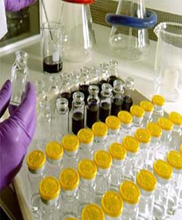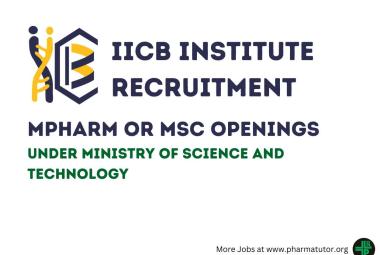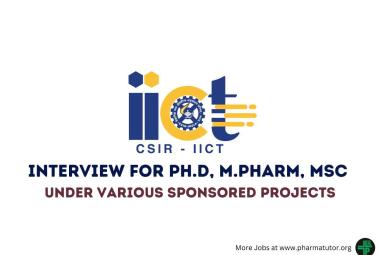About Author:
Nitish Chhabra
Arbro Phamaceuticals Ltd.(Analytical Divison), New Delhi
Seth G.L. Bihani S.D. College of Technical Education,
Sriganganagar, Rajasthan, INDIA
INTRODUCTION
The pharma packaging industry in India is still n a nascent stage. “First impression is the last impression; packaging plays a very important role in creation that impression for any product. But when it comes to pharmaceuticals, it has to go beyond looks”.
The term “compatibility” encompasses three different consequences of chemical interaction between the package and any of the components of a drug product formulation.
(1)The first results in actual reduction in drug availability or potency through sorption- the removal of the drug by the package.
(2) The second result in contamination as the formulation extracts substances from the package.
(3)The third cause’s breakdown of the package by deterioration of its strength, stiffness or barrier properties as the formulation chemically attacks the package
Reference Id: PHARMATUTOR-ART-1236
Packaging is a combination of science, art and technology. Considering the growing demand of packaging in the consumer market, it is observed that most of the consumer products manufacturing companies are demanding packaging professionals for procuring consistent qualitative packaging materials in optimum cost. In addition, it is also observed that the purchase and marketing departments various companies who deal with the packaging material require packaging experts. However, experts maintain that while investing and innovation in packaging, some key hallmarks have to be taken care of.
Packaging also makes a bridge between production and marketing. The thumb rule is applicable to pharmaceuticals as much any other product because packaging of drugs needs to convey that feel good factor to a patient who needs that drug to be cured. However, packaging is also used to disseminate important information regarding the drug like its contents or chemical formula, usage, storage, dosage, precautions related the drug usage, dates of manufacturing and expiry, batch number etc.
For product protection, USP recommendations are specific about package type since they depend only on the properties of the drug. By contrast, specific compatibility recommendations cannot usually be made since interaction of a drug with a package depends on the chemistry of both the drug and the package, but there are exceptions for some injectable fluids, USP recommends “glass only” or “type 1 glass only” etc. among the 33 drugs that did not fall into one of the 35 general categories , there are a few cases where specific restrictions related to compatibility are given: glass or PE, nonmetallic, plastic, plastic container and collapsible lined or coated tube.
Thus the packager has the responsibility to be certain that “the container doesn’t interact physically or chemically with the article placed in it so as to alter the strength, quality, or purity of the article beyond the official requirements”. While there are a few compatibility problems with glass (a prominent case being with nitroglycerine preparations) and with metal containers for corrosive drugs, the concern has been primarily with plastic packages. Beginning in the early 1970s many compatibility studies of drug/packaging system were conducted. For sterile dosage forms, an excellent summary was published in 1984 by wang and chien. They summarize in one table the results of sorption studies on 15 different drugs. A significant change (discoloration or 10 % or greater absorption of the drug) occurred in 36% of the systems studied. While compatibility problems are considerably less common for other dosage forms , they have been encountered, and quantitative analysis of the problem is not always easy.
INTERACTIONS BETWEEN PACKAGING MATERIALS AND THEIR ENCLOSED DRUG PRODUCT
Sorption
When formulation components are removed by a package two different processes are involved: adsorption onto the surface and absorption into the package wall by diffusion. A component may also desorbs from the outer surface of the package and pass into the atmosphere if it is volatile enough. Strong adsorption or absorption requires a strong chemical interaction between the component and the packaging material in addition, for a high level of absorption the packaging material must be permeable to the component. Glass has a chemically active surface but is an absolute barrier so that while adsorption can be strong, no absorption occurs. For plastics, on the other hand, both adsorption and absorption are possible. In the literature, when adsorption and absorption occur together, there is rarely a distinction made between the two and therefore the term sorption will be used to indicate both are taking place.
Leaching
Leaching is primarily a problem with IV fluids and large volume parenterals. Widely studied examples are the leaching of plasticizers from PVC IV bags, extraction of additives from rubber closures and corrosion of glass surfaces. Most leaching problems occur with plastics because of the presence of additives such as fillers, activators and plasticizers. Leaching can cause discoloration, precipitation, change in pH, and contamination that can lead to increased toxicity or instability of the drug.
Modification of the container
The physical or chemical alteration of packaging materials by drug products is called modification. Permeation, sorption and leaching all can alter properties of plastic and may also lead to degradation. Some solvent systems have been found to be responsible for considerable changes in the mechanical properties of plastics. Oils, for example, soften PE and fluorinated hydrocarbons attack PE and PCX. Changes in PE caused by some surface active agents have been noted. In some cases, the drug formulation may extract the plasticizer, antioxidant or stabilizer and change the flexibility of the package. PVX is an excellent barrier for petroleum-based solvents but the plasticizer in PVC is extracted by solvent, leaving the plastic hard and stiff.
Chemical reactions
*An oxidative reaction accelerated by the presence of low levels of copper.
* Contamination arising from the extraction of plasticizers from PVC pipelines.
*A bulk product involving clarity of solution test was packed in a low-density polytethylene bag inside a metal drum. On reaching its destination the product failed the clarity of solution test. This was traced to a lubricant in the polyethylene which achieved its effect by being present at the surface of the film. During transportation the lubricant was physically removed from the film surface, by vibration with the solid product.
Permeation
The transmission of gases, vapors, or liquids through plastic packaging materials can have an adverse effect on the shelf-life of a drug. Permeation of water vapor and oxygen through the plastic wall into the drug can present a problem if the dosage form is sensitive to hydrolysis and oxidation. Temperature and humidity are important factors influencing the permeability of oxygen and water through plastic. An increase in temperature reflects an increase in the permeability of the gas.
Alteration in physical or chemical properties
Phenomena such as sorption, leaching etc. play vital role in altering the properties of packaging or products and may also lead to degradation. For ex. deformation in polyethylene containers is often caused by permeation of gases and vapors from the environment or by loss of content through the container walls.
Bringing a new biological drug to market requires a huge financial commitment and entails risks in every stage of the development process. The risk associated with selecting a vial/stopper/seal system for packaging the drug may not be in the forefront of early-stage thinking, but the risks are real nonetheless and can have profound impact on the drug product.
Selecting packaging for a parenteral drug is critical for a successful market launch. Packaging components must meet functional requirements to help ensure safety at the point of administration and must protect the purity of the packaged drug product for its shelf-life, usually a minimum of two years. Packaged drugs, especially highly sensitive biopharmaceuticals, can be harmed if the administration system and packaging components are not selected carefully to ensure compatibility with the drug.
With all that is invested in drug research and development, biopharmaceutical researchers must include packaging and administration system selection in their product development planning. Requirements for product purity, activity and shelf-life dictate a very high standard for injectible drug packaging, particularly for highly sensitive biopharmaceuticals.
The Food and Drug Administration’s (FDA) Guidance for Industry – Container Closure Systems for Packaging Human Drugs and Biologics (May 1999), states that pharmaceutical manufacturers should conduct extractables and leachables testing on their container closure systems and drug product. The guidance recommends that each New Drug Application (NDA) or Abbreviated New Drug Application (ANDA) contain enough information to demonstrate that a proposed package and its components are suitable for their intended use.
What’s more, FDA’s current thinking on Quality by Design (QbD) has implications for the biopharmaceutical industry. The Agency has stated that drug product quality should be designed into the process (using QbD, that is), not achieved by testing drug products into compliance. Controls should be in place as far upstream as possible. A QbD initiative for biopharmaceutical manufacturing is designed in terms of risk assessment, risk analysis and risk control.
Risk assessment should be integrated into product development and process development activities, which includes selection of the product’s packaging and administration system. To connect the drug administration system to the manufacturing process in a QbD environment, the biopharmaceutical company should conduct a risk assessment of the container closure system components during the early stages of product development.
An early-stage assessment can identify potential issues related to system component functionality, machinability and fitness for use with a specific biological product. It is especially important to evaluate potential extractables from elastomeric components such as vial stoppers and syringe plungers. A risk analysis can help identify a potential adverse effect to the product caused by system components, which helps the biopharmaceutical company to prevent or eliminate the potential risk. Risk control and mitigation are pertinent to the process scale-up phase of product development.
A QbD system strives to reduce risks to product quality by managing and controlling the source of materials and the effect of variability in materials used to manufacture products such as container closure system components. Biopharmaceutical manufacturers can advance their QbD process by working with component manufacturers that have appropriate in-process controls in place.
NOW YOU CAN ALSO PUBLISH YOUR ARTICLE ONLINE.
SUBMIT YOUR ARTICLE/PROJECT AT articles@pharmatutor.org
Subscribe to Pharmatutor Alerts by Email
FIND OUT MORE ARTICLES AT OUR DATABASE
THE POTENTIAL IMPACT OF EXTRACTABLE
Minute particles of metals, plasticizers and other materials from packaging components may deactivate or denature biopharmaceuticals such as monoclonal antibodies. Whether in liquid or lyophilized form, biologically derived products possess properties that make them extremely sensitive to their packaging or delivery system. Proteins and peptides have a tendency to adsorb onto the surface of packaging containers and closures.
Lyophilized proteins are no less immune to the effect of packaging. Because lyophilized cakes are sensitive to moisture, an inadequate seal could cause water to enter the package and interfere with the activity of the drug product. Many biopharmaceuticals are sensitive to silicone oil, a material commonly used to lubricate elastomeric components so they will track properly on pharmaceutical filling lines. Component lubricity also facilitates the insertion of stoppers into vials and plungers into syringes.
Fluorocarbon films on stoppers and plungers provide needed lubricity and create a chemically inert barrier between the component and the packaged drug. Fluorocarbon films thus serve as both lubricant and a barrier to improve compatibility between the drug and the rubber closure. Extractables and leachables can be released into a drug product from a container closure system, other packaging materials or from the processing equipment.
These chemical entities may have a direct effect on the patient by being toxic, carcinogenic or im











.png)

